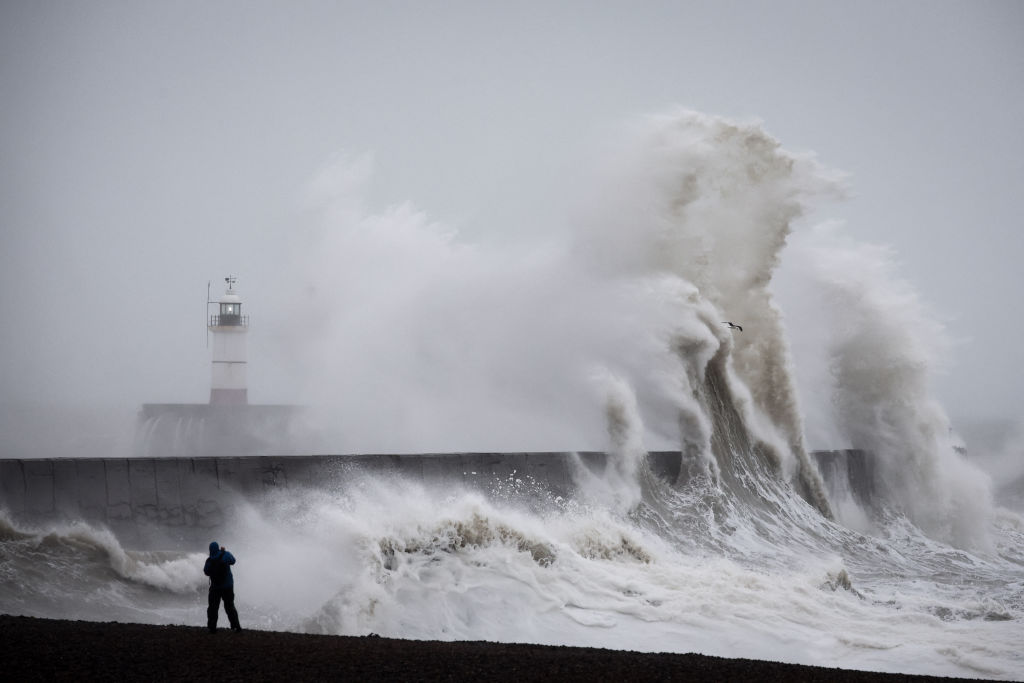John Foreman’s recent article on the Yantar incident highlighted the Russian threat to Britain’s economically vital data cables. Data cables are, however, only part of a disturbing picture. The UK is almost the only large country whose critical national infrastructure is so heavily coastal or underwater. All of our gas comes by sea, either through pipelines from Europe, from the North and Irish Sea, or through delivery of LNG to our ports. Most of the rest of our electricity sources are coastal too: undersea cables bring offshore wind and carry power from the Continent, and every British nuclear power station has a vulnerable outflow to the sea.
Yet few ports have been designated as strategic and are thus given protection from our small and over-stretched Navy. Moreover, while the coastguard, police and Border Force all have some aquatic responsibilities, they have little equipment or training to protect littoral or coastal assets, certainly not from a state-sponsored attack.
The Royal Navy sent out one of its handful of submarines with a frigate and a patrol vessel with RAF air cover to challenge the Yantar, and has recently taken into service RFA Proteus, with advanced sensors which will carry a number of remotely operated and autonomous undersea drones to collect data. A (single) planned sister ship awaits the Strategic Defence Review.
Yet Britain’s territorial waters have an area three times our landmass, seeded with suitable targets. If instead of the Yantar, it had it been a dozen trawlers dragging their anchors in different, sensitive locations, our armed forces would swiftly have faced overload. Worse if a small vessel, like a yacht, dropped a mine in an approach to a port (purchased perhaps from a cheap and deniable source like Brazil), and a message went out that further ports were threatened, the Navy’s mine-hunting capability could be quickly overwhelmed.
More widely, the UK lacks intelligence arrangements for coastal security beyond a few coastguard and Border Force clusters, backed by an element of satellite monitoring, and the public is not involved at all. If, for example, a yacht operator was to see a trawler acting suspiciously – or even spot people offloading suspicious-looking equipment in a marina – there would be no avenue to report it aside from calling 999.
These scenarios offer an easy way to promote havoc in Britain on a large scale. Yet, with its small fleet of surface ships and submarines, many of them awaiting maintenance, backed by a handful of RAF Poseidon maritime reconnaissance aircraft, the Royal Navy cannot take on a huge extra role. An affordable solution is urgently needed.
This surely calls for a shift towards a wider national response. Until a generation ago, protection of our port approaches, anchorages and coastal waters was predominantly carried out by the Royal Naval Reserve (RNR) with minesweepers and capable patrol vessels. The RNR also provided an affordable surge capability for explosive ordnance disposal (EOD) teams. The Royal Naval Auxiliary Service (RNXS) was an unarmed body whose job both ashore and in coastal tenders was to keep ports operating in time of crisis, providing engineers, seamen, communications and security staff.
The RNXS was disbanded in 1993 and today’s RNR has no vessels and consists mostly of a pool of individuals, commanded overall by a regular officer, and – in contrast with the other services – with no reservist voice on the Navy Board or in any of its key subordinate headquarters or policy branches.
Britain neglected coastal security in the build-up to world war two
Removing capability and ships from the RNR – and effectively abandoning the coastal and littoral responsibilities – was a result of extreme financial pressures on a Navy desperate to focus its declining budget on its carrier and nuclear submarine forces. It was justified on the basis that modern warships – and areas like EOD – were too complex for reservists. Yet the navigation qualifications for taking ships to sea are common across the civil/military maritime sector and the Royal Engineers keeps half its EOD capacity in the Army Reserve. Meanwhile, in the US, the Coastguard Reserve has a role similar to, but broader than our old RNXS, with complete armed units of part-time reservists to defend ports under threat.
Much of the search element of mine clearing is done remotely now with systems like Remus which reservists can be trained to operate from small vessels. In a crisis, it is search capability for which surge capacity is most critical; vast areas may need searching to ensure they are safe after an incident. And until this is done, ports will remain closed to trade and the consequences to a modern economy based on fast moving consumer goods and just-in-time supply will be quickly and deeply felt.
RNLI crews provide a striking parallel to what could be. They use simple vessels crewed, and often commanded, by part-time volunteers, operating in all weathers and responding at very short notice. An RNR with small armed vessels could have crews trained to search for mines – and to intercept and check small vessels behaving suspiciously. It was a Swedish reserve officer who boarded the Soviet submarine stuck on the rocks outside Karlskrona naval base in 1981.
This force could be backed by drones operated by reservists (a widespread civilian skill put to good use in Ukraine) backed by a network of unpaid volunteers from the wider maritime commercial and leisure sectors and other waterborne fields providing ad hoc intelligence.
Britain neglected coastal security in the build-up to world war two as the Naval budget focused on building battleships, leaving our coastline highly vulnerable to cheap, fast E-boats attacking incoming convoys and laying mines. It is striking that the best thinking in how to cope with this on a shoestring, with wartime budgets strained, came from the much-decorated prewar reservist and yachtsman Robert Hichens. We may need his spirit and resource – and willingness to challenge the admirals – again soon.






